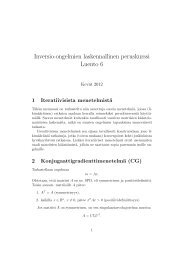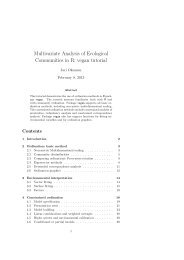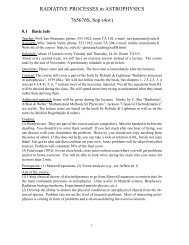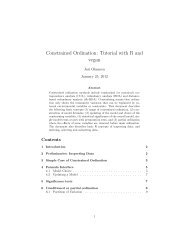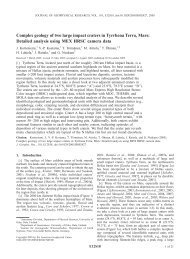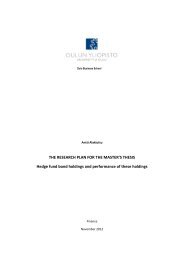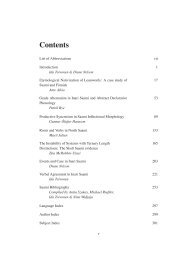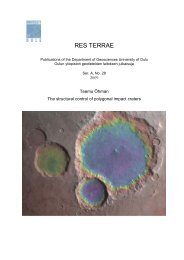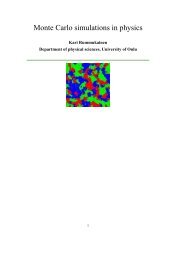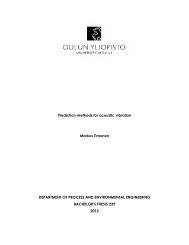Juha Köykkä - Oulu
Juha Köykkä - Oulu
Juha Köykkä - Oulu
- TAGS
- juha
- oulu
- cc.oulu.fi
Create successful ePaper yourself
Turn your PDF publications into a flip-book with our unique Google optimized e-Paper software.
Res Terrae, Ser. A 32, J. <strong>Köykkä</strong>, Sedimentology of the Mesoproterozoic Telemark basin-fills, South Norway: implications for<br />
sedimentation processes, depositional environments and tectonic evolution<br />
Precambrian alluvial sedimentation patterns can display complex interactions be-<br />
tween tectonics, different sedimentation processes, climate, metamorphic imprinting,<br />
and source rock composition. Ancient alluvial deposits can form thick, complex strata,<br />
but recognizing and distinguish between alluvial fan, braided fluvial, or braidplain de-<br />
posits in the sedimentary record is often difficult, especially if the paleoslope of the<br />
channel(s) is unknown (e.g., Els, 1998; Eriksson et al., 2006; Bose et al., 2008). The<br />
depositional environments are usually sensitive to both tectonic activity and changing<br />
climatic conditions. However, they tend to have some characteristic facies assemblag-<br />
es.<br />
The Heddersvatnet Formation is composed of volcaniclastic breccias and conglo-<br />
merates, sandstones, associated mudstones, and subaerial basaltic lavas, which were<br />
divided into major genetic lithofacies associations and minor lithofacies. The sedimen-<br />
tological studies and basin analysis support the interpretation of an alluvial fan and<br />
possible associated braidplain deposit: (i) a deposition close to the source area; (ii)<br />
slightly divergent paleoflows; (ii) high-energy flows with waning flood-cycles; (iv) an<br />
abundance of poorly sorted and laterally extensive subaerial debris flows along with<br />
related streamflows, possible sheetfloods, hyperconcentrated flows, and their associa-<br />
tions; (v) a large distribution of grain size and lithofacies changes in proximal vs. distal<br />
parts; (vi) a limited suite of sedimentary structures (cross-stratification, ripple-marks,<br />
and desiccation cracks); (vi) a fault bounded basin (graben) with a hanging wall close<br />
to uplifted flank(s); (viii) a paleoslope estimation indicating at least moderate paleoto-<br />
pographic heights; (ix) colluvial and scree apron breccias; (x) a lack of any typical<br />
braided stream channel fill conglomerates and floodplains; and (xi) channelized sedi-<br />
ment bodies lacking extensive lateral continuity. The paleogeographical model sug-<br />
gests that the proximal part of the formation is dominated by colluvial and scree apron<br />
breccias and subaerial debris flows with associated streamflows and hyperconcentrated<br />
flows or sheetfloods representing waning-flood cycles. The distal part of the Hedders-<br />
vatnet Formation is dominated by traction current deposits, which were interrupted by<br />
the fluctuating pulses of subaerial lava that flowed down the rift valleys, diverting the<br />
subsequent flow. Small-scale intra-rift faulting may have caused sub-environment de-<br />
velopment and lateral lithofacies changes to climatically or seasonally control intrafan<br />
ponded-lake sedimentation with playa type cycles.<br />
52



